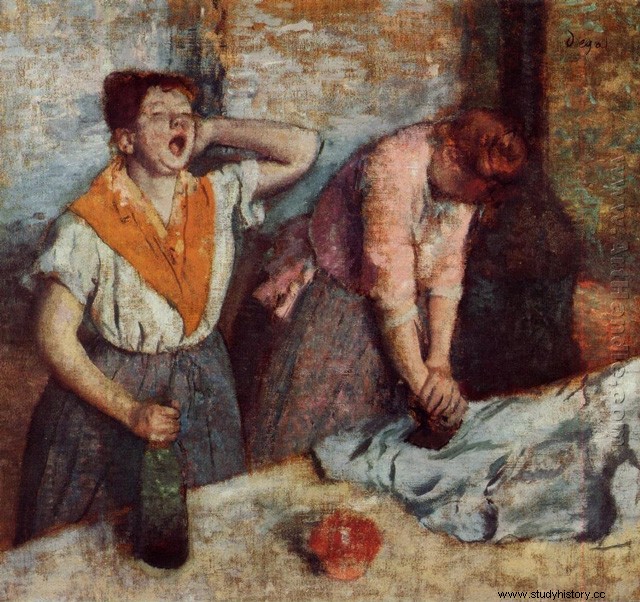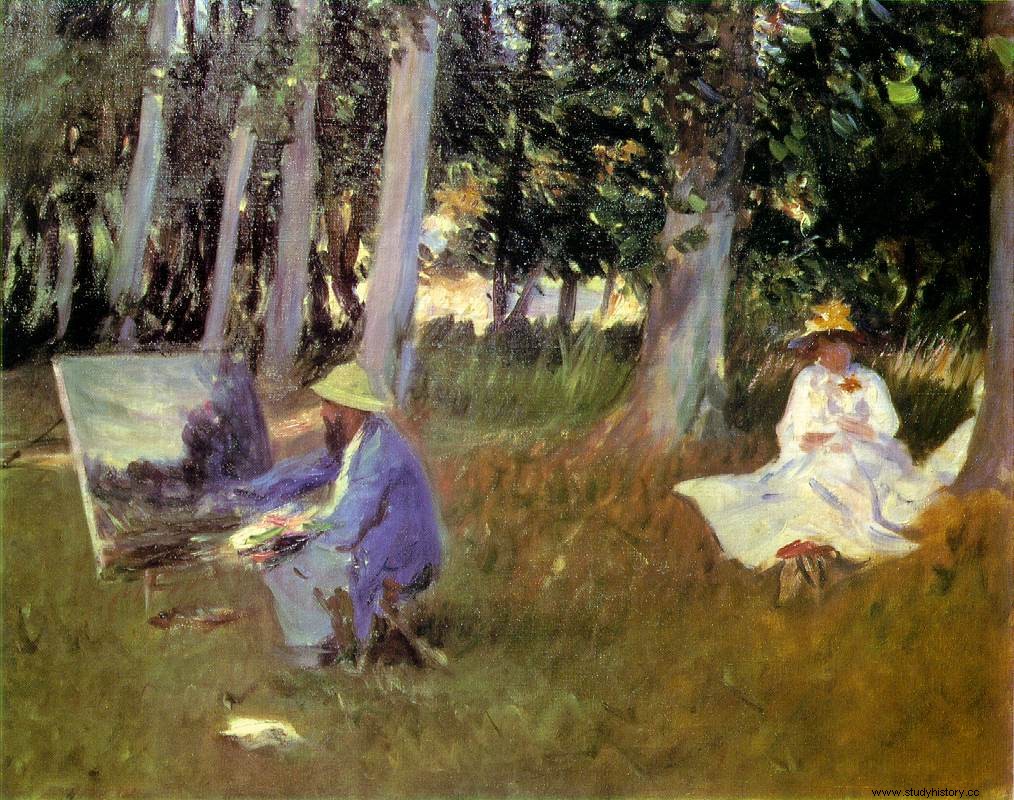If we look at the index of a current manual on the history of French painting of the 19th century, we will see something very similar to this:
1. Neoclassical (David and Ingres)
2. Romanticism (Gericault, Delacroix and Chasseriau)
3. Realism (Courbet, Millet, Daumier, Barbizon School)
4. Impressionism (Manet, Monet, Renoir, Pissarro, Degas…)
5. Post Impressionism (Gauguin, Toulouse-Lautrec, Van Gogh, Seurat, Cezzane)
6. Symbolism (Moreau, Puvis de Chavannes, Redon).
In other words, we will see a succession of styles, their most famous authors and their main works. As I have said, we would only see this supposed index in a current manual, but not in one, for example, from 1900. Why? Because today, and for several decades, works, authors and styles have been valued, which at the time were ignored or detested by the public and critics; I speak above all of the Impressionists. While the most famous of the time, along with their great works, belonging to the academic eclectic style or pompier , today they have disappeared from outreach works and school manuals and therefore from the knowledge of the general public.
If we told this fact to a Parisian bourgeois gentleman of the time, connoisseur of French painting of the second half of the 19th century, he would take us for crazy. How could the unfinished works of Manet, Renoir, Monet or Van Gogh be more valued than the works of Geyre, Cavanel, Gerome, Bouguereau, Couture or Bonnat with their infinite grace?

“A Jury Session in the Hall”, painting by Henry Gervex, 1885
These artists today are unknown to the general public and the Impressionists are known to everyone, right? Well, for the "common" Parisian fan of the time, they would be quite the opposite. The Bonnats, Coutures and others, would be the great stars that they liked, while they would probably see Manet as a hateful painter for his constant intention of scandalizing the bourgeoisie with themes and human models that were too realistic and contemporary. If he knew the Impressionists, which he probably didn't, he wouldn't understand his works, but would see them as unfinished sketches of some very vulgar paintings because of the subjects they used to paint. An example of the academic style “Young Greeks, a cockfight ”, by Jean-Leon Gérôme.

“Young Greeks, a cockfight”, Jean-León Gérôme 1846
The pompiers , as we said, they were the artistic elite. His conception of art was marked by the official path created by the Parisian Academy of Fine Arts, which organized exhibitions or official Salons, where the juries on duty decided which paintings and authors were worthy of being awarded and which were not, and by following the norm, they triumphed year after year.
The Impressionists, meanwhile, were nothing at all. With the exception of Manet, they gave up trying to succeed by way of the Salon. The jury never admitted them since for them it was a second category painting, a painting without any value. Thus, these artists, before being known as "impressionists", created private exhibitions where they exhibited their works and made themselves known. The bourgeois of 1874 would be aware of that exhibition, but a priori he would not think of going to see it. Only after reading the hurtful and fierce criticism in the newspapers, in which it was said that people left there between scandalized and dying of laughter, only then, would I meet a friend to go see her and do what the majority did, be scandalized , laugh and underestimate those works. These behaviors occurred since the works of both schools are at the opposite end of the spectrum from all possible points of view. Let's see some:
- If the impressionist works seem unfinished and the brushstrokes are perfectly observed, in the eclectic ones the opposite effect is sought, they do not seem to have been painted, there is no trace or imprint of the brush. The roughness of the Impressionist works contrasts with the neatness and smoothness of the pompiers, which is known in artistic language as “slicked back”.
- The overflowing colorism of the Impressionists contrasts with the low value given by academics to color, which was highly dependent on a well-marked drawing. And the Impressionist burst of luminosity goes far beyond the simple homogeneous luminosity of the eclectics.
- While the academicists make large format works on the most noble genres, such as mythological or historical, the impressionists make small and medium format works on genres totally banished by the Academy, rural and urban landscapes and genre scenes.
- If the Impressionists went out to paint in the field directly from life, without previous sketches and they were loaded with an easel, paints, brushes, a portable size canvas, a stool and a sandwich; the academics paint as they have always done, in their workshop, first making sketches of the general composition and of the figures in particular and, a few months later, when everything is ready, transfer it to a canvas that will not measure less than three meters long by two tall. In short, in a year and a half or two, he will have the painting finished (in time to present it at the Salon, of course), while the Impressionist, if he is bad at it, will have it ready in a week or two.
- According to academic guidelines, we had to flee from the present. Scenes of all kinds could be recreated in his works as long as they took place in the past, be it classical, oriental or medieval, and always with a hint of unreality and idealization and sometimes even with a certain erotic touch. The guidelines followed by the Impressionists were very simple, to represent the present moment whether in a lake, city, river, village or forest, always realistically. So the views of Paris at the time and its people were made by the Impressionists, not by others.
- If the eclectics painted figures in forced, studied, and idealized postures, the impressionists, when they painted them from a distance, directly represented them with diffuse spots, and if they painted them up close, they did so in realistic life postures everyday life, even yawning, as Degas did with his ironers.

"The Ironers" by Degas

Monet painting outdoors
Therefore, why has the history of art changed and who the figures were today are hardly remembered and we extol those who were reviled or ignored? Basically because academic painting did not bring anything new:neither thematic nor stylistic. That is why the Bouguereau, Gleyre, Cavanel, Gerome, Bonnat or Couture and their style in general have fallen into oblivion, and when they are spoken of, it is recognized that they must be "recovered", as for example with the exhibition that the Museum Thyssen de Madrid dedicated it to Jean-León Gerome in 2011. And the Impressionists, who were misunderstood due to the radical nature of their artistic postulates, are adored today and their style has been the most loved by the public for decades.
